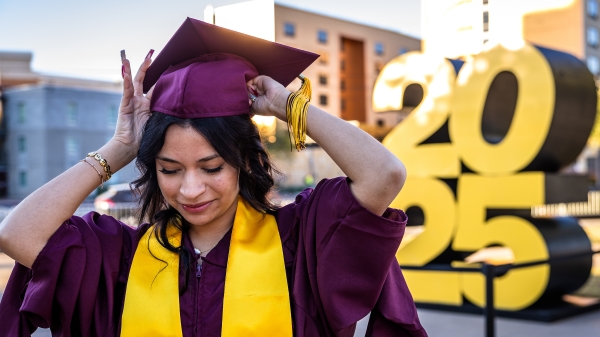Geodesign and urban development may not be the sexiest words in the dictionary, but it’s the meaning behind these titles that generates a lot of interest among students and faculty alike.
Arizona State University recently hosted about 15 different organizations at a design and development workshop on the Tempe campus. During the two-day seminar, community representatives, stakeholders and academics met to work out the details of future urban planning in Phoenix. Among the organizations were Native American tribal representatives, economic development directors and community relations officers.
The purpose of the workshop was to demonstrate the use of digital geodesign tools to create a sustainable city in a desert landscape. The focus: Northwest Phoenix, where plans are being laid out to redesign the area around the Thunderbird Global School of Management, which ASU acquired a year and a half ago.
The designers and developers aim to help everyone impacted by new developments in the area by determining the best possible layouts for new construction projects. This is done primarily through geodesign’s most powerful tool: geographical information systems (or GIS), which allows planners to analyze and evaluate future land-use scenarios with various stakeholders.
The workshop also explored environmental factors, such as CO2 emissions and water conservation.
“Every scientific body that I go to talks about how to create simulation models for the future so that our cities are more sustainable,” said Patricia Gober, interim director at ASU’s School of Geographical Sciences and Urban Planning. “The ability to use these models and fuse them with public debate and discussion helps us tackle climate change issues.”
“The engagement and conversations are positive,” said workshop attendee Bobbi Magdaleno, director of community relations at ASU’s Office of Public Affairs. “It’s exciting because we’re talking about things like growth, change and vision.”
“[The workshop] is an opportunity for students to have hands-on experience,” said attendee David P. McAlindin, assistant director at Glendale’s Office of Economic Development. “The students can look at how they can better communities with tools that are available to them.”
The workshop also helped kick off a proposed new master’s program in geodesign at ASU.
According to Gober, the master’s program is a perfect example of how ASU searches for ways to be part of the community, and that there has been a high level of interest from students both locally and internationally.
“I think that the participants and community reps were quite excited by the tech and social processes surrounding geodesign. They saw real potential to develop things for the future,” she said.
More University news

Year in review: ASU's top stories for 2025
It has been a year of big announcements and bold research discoveries, as Sun Devils worked to make lives better across Arizona…

ASU launches Operation Comeback to help Arizonans finish their degrees
Arizona State University has launched a new initiative called Operation Comeback to help Arizona residents who started college at…

Fall 2025 grads encouraged to enter next chapter of life with optimism
Newly minted Arizona State University graduates were urged to help America strive toward a greater democracy as they celebrated…
